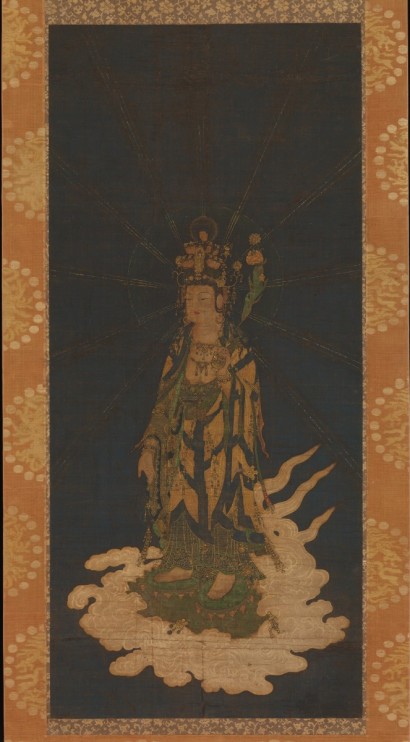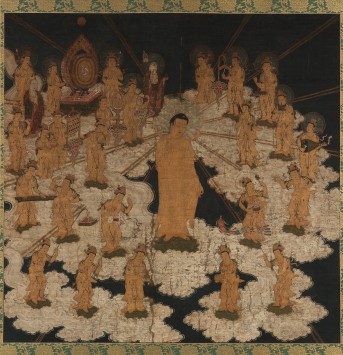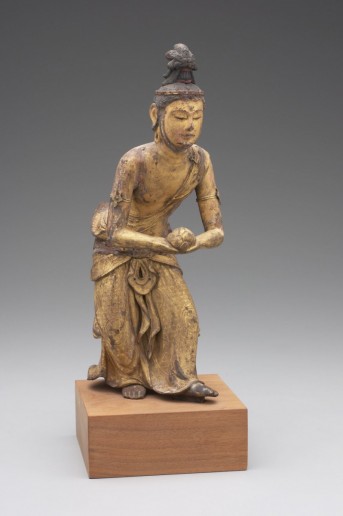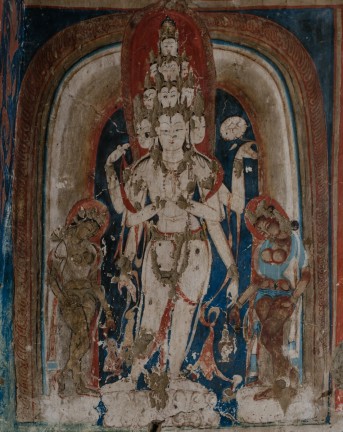Japan, Kamakura period, 14th century; hanging scroll, ink, color, gold, and cut gold on silk; image: 33 15/16 x 15 1/4 in., mount: 64 1/4 x 19 1/2 in., The Metropolitan Museum of Art, Purchase, Charles Wrightsman Gift, Joseph Pulitzer Bequest, Dodge, Pfeiffer and Rogers Funds, and funds from various donors, 1972, 1972.181, photo: www.metmuseum.org.
In Pure Land Buddhism, Kannon is Amida’s most important attendant. He leads the Welcoming Descent, known as Raigo in Japanese. Kannon offers dying devotees a lotus throne, which signals their transfer from the mundane world to Amida’s pure realm of Sukhavati. This painting shows the eleven-headed form of Kannon, called Juichimen in Japanese, an esoteric manifestation sometimes seen in Pure Land imagery. Floating down from Sukhavati on a pedestal of clouds, Kannon emanates golden light while holding a vase with a lotus. The bodhisattva’s right hand makes the compassionate varada mudra. Gorgeous jewels and sumptuous fabrics adorn the androgynous deity, a radiant vision that reflects the splendor of Amida’s Pure Land.







